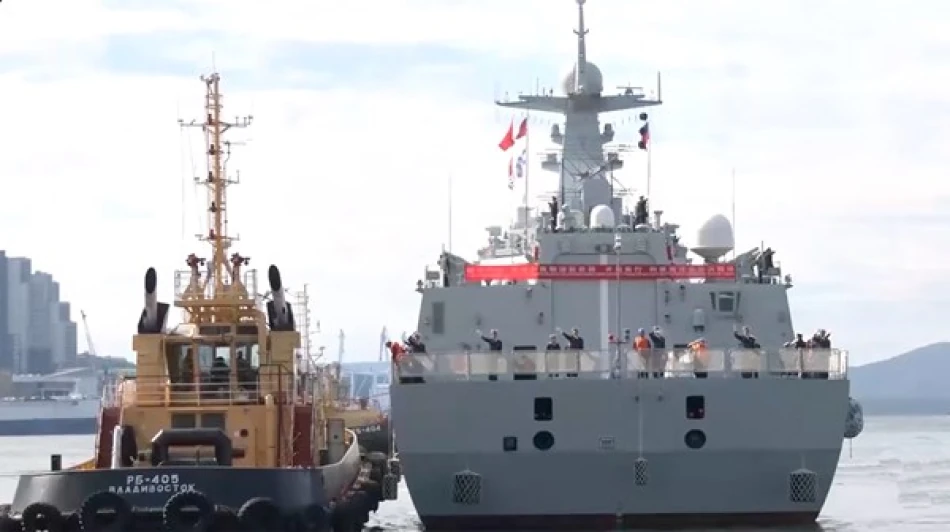
Russian and Chinese Naval Forces Conduct Joint Exercises in Strategic Maneuver
Russia and China Flex Naval Muscle in Pacific as Trump Deploys Nuclear Submarines
Russian and Chinese naval forces are conducting joint artillery and anti-submarine warfare exercises in the Pacific Ocean, just days after President Donald Trump ordered two nuclear submarines to "appropriate areas" in response to provocative statements from former Russian President Dmitry Medvedev. The timing underscores escalating tensions between nuclear powers and highlights the deepening military partnership between Moscow and Beijing.
Joint Naval Operations Signal Strategic Coordination
The "Naval Interaction 2025" exercises, scheduled to conclude Tuesday, involve a combined fleet featuring a major Russian anti-submarine warfare vessel and two Chinese destroyers, according to Russia's Pacific Fleet. Diesel-electric submarines from both nations are participating alongside a Chinese submarine rescue vessel, demonstrating the sophisticated level of military integration between the two powers.
Russian and Chinese sailors are conducting live artillery fire, practicing air defense and anti-submarine warfare tactics, and refining joint search-and-rescue operations at sea. These activities represent more than routine training—they showcase operational interoperability that could prove decisive in any future Pacific conflict.
Strategic Partnership Deepens Amid Global Tensions
The exercises reflect the "unlimited" strategic partnership agreement signed by Russia and China shortly before the Ukraine crisis erupted in 2022. This alliance has evolved from diplomatic cooperation into tangible military coordination, with regular joint exercises designed to enhance combat readiness and signal unified opposition to Western influence in the Pacific.
Unlike previous decades when Sino-Russian military cooperation remained largely symbolic, today's exercises involve sophisticated weapons systems and complex operational scenarios. This represents a fundamental shift in global power dynamics, creating a formidable naval bloc that challenges traditional U.S. dominance in Pacific waters.
Trump's Nuclear Response Escalates Stakes
President Trump's deployment of nuclear submarines came as a direct response to what he characterized as "extremely provocative" statements from Medvedev regarding potential conflict between nuclear-armed adversaries. This rapid escalation from rhetoric to military positioning demonstrates how quickly diplomatic tensions can translate into strategic deployments.
The submarine deployment marks an early indication of how the Trump administration intends to respond to perceived threats, favoring immediate military positioning over extended diplomatic engagement. This approach could define U.S.-Russia relations for the coming years, particularly as both nations maintain extensive nuclear arsenals.
Pacific Theater Becomes Primary Battleground
The Pacific Ocean has emerged as the critical theater where great power competition plays out through naval exercises, territorial disputes, and strategic positioning. China's growing naval capabilities, combined with Russia's submarine expertise, create a challenging environment for U.S. forces traditionally accustomed to operating with minimal opposition in these waters.
For regional allies like Japan, South Korea, and Australia, these developments signal a need for enhanced defense cooperation and potentially increased military spending. The era of unchallenged Western naval supremacy in the Pacific appears to be ending, replaced by a more complex and potentially dangerous multipolar dynamic.
 Layla Al Mansoori
Layla Al Mansoori







